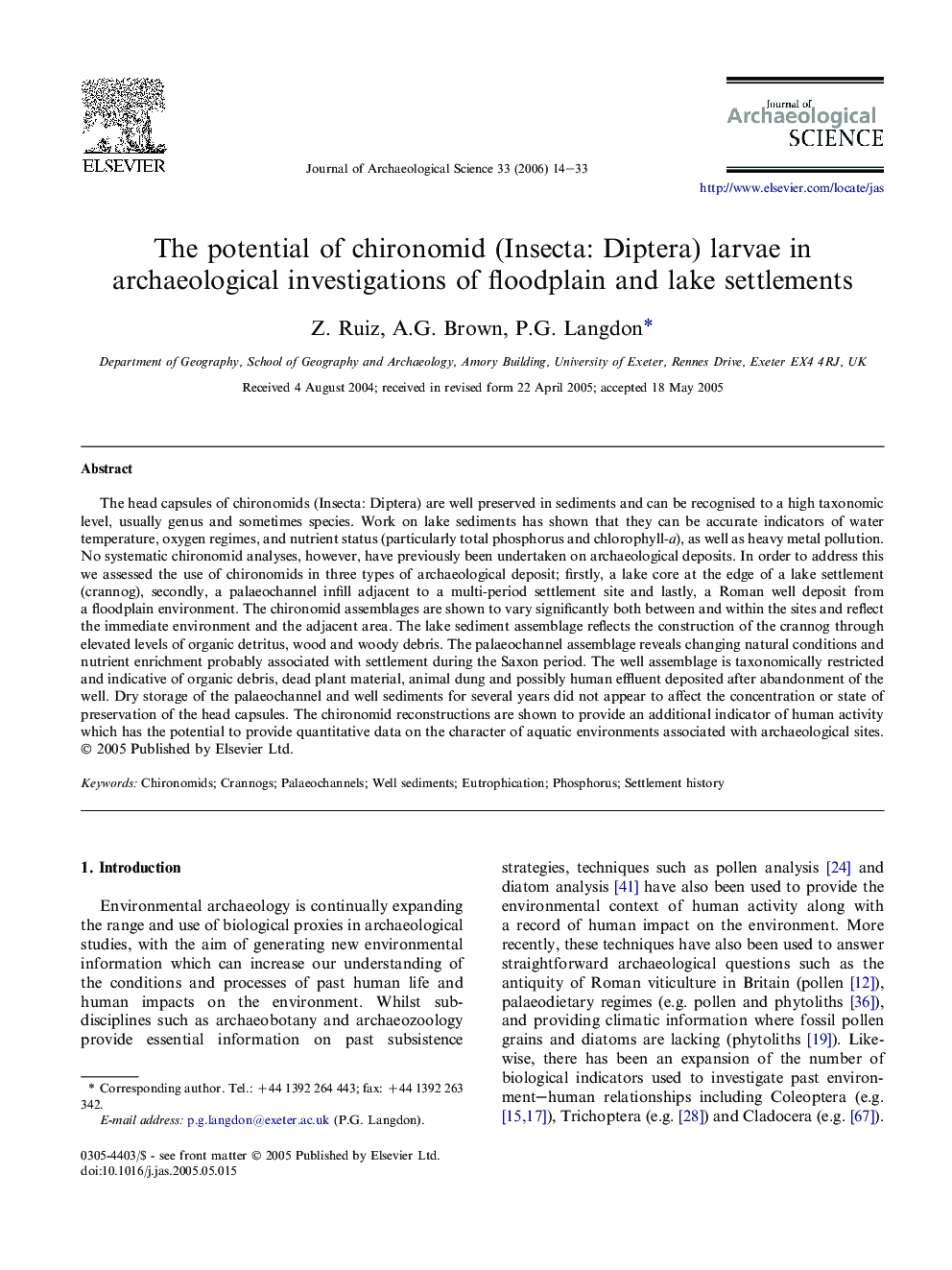| کد مقاله | کد نشریه | سال انتشار | مقاله انگلیسی | نسخه تمام متن |
|---|---|---|---|---|
| 1037721 | 943948 | 2006 | 20 صفحه PDF | دانلود رایگان |

The head capsules of chironomids (Insecta: Diptera) are well preserved in sediments and can be recognised to a high taxonomic level, usually genus and sometimes species. Work on lake sediments has shown that they can be accurate indicators of water temperature, oxygen regimes, and nutrient status (particularly total phosphorus and chlorophyll-a), as well as heavy metal pollution. No systematic chironomid analyses, however, have previously been undertaken on archaeological deposits. In order to address this we assessed the use of chironomids in three types of archaeological deposit; firstly, a lake core at the edge of a lake settlement (crannog), secondly, a palaeochannel infill adjacent to a multi-period settlement site and lastly, a Roman well deposit from a floodplain environment. The chironomid assemblages are shown to vary significantly both between and within the sites and reflect the immediate environment and the adjacent area. The lake sediment assemblage reflects the construction of the crannog through elevated levels of organic detritus, wood and woody debris. The palaeochannel assemblage reveals changing natural conditions and nutrient enrichment probably associated with settlement during the Saxon period. The well assemblage is taxonomically restricted and indicative of organic debris, dead plant material, animal dung and possibly human effluent deposited after abandonment of the well. Dry storage of the palaeochannel and well sediments for several years did not appear to affect the concentration or state of preservation of the head capsules. The chironomid reconstructions are shown to provide an additional indicator of human activity which has the potential to provide quantitative data on the character of aquatic environments associated with archaeological sites.
Journal: Journal of Archaeological Science - Volume 33, Issue 1, January 2006, Pages 14–33